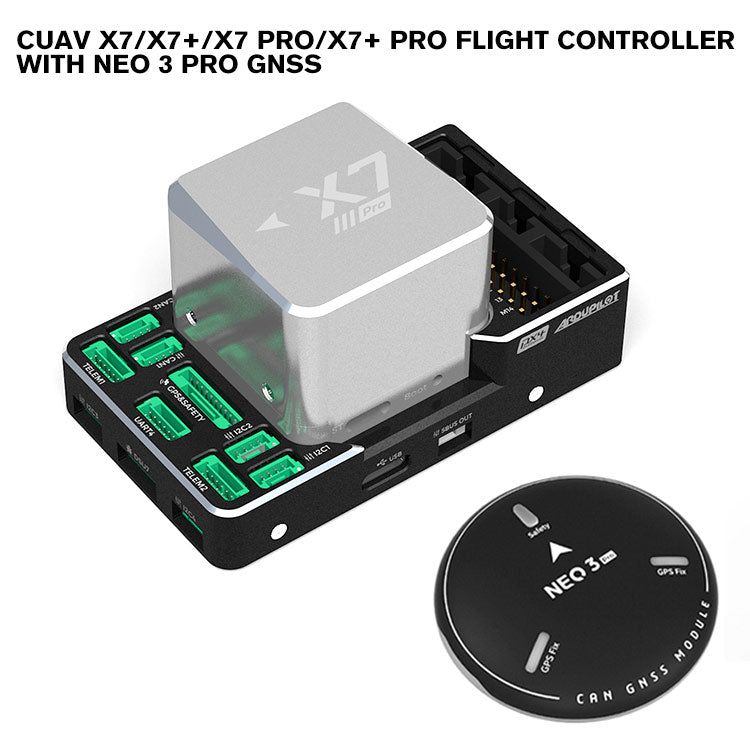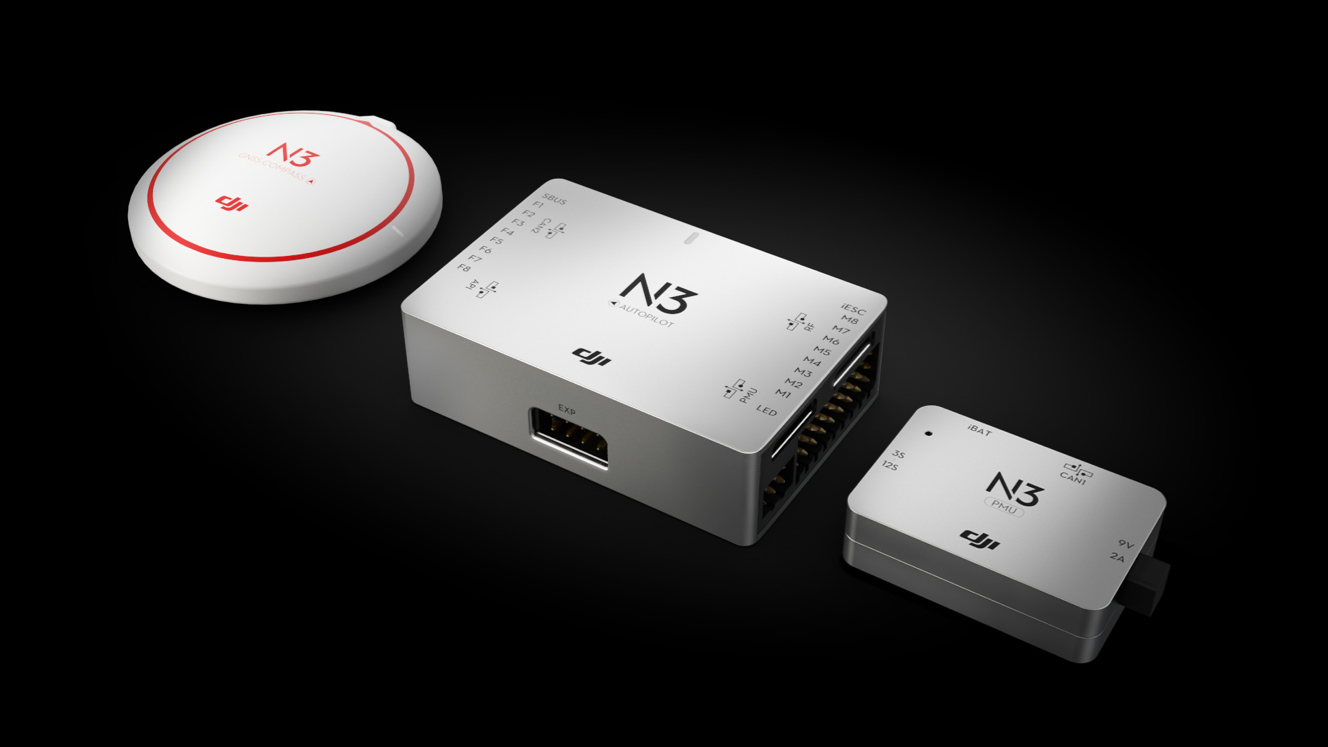SparkNavi Drone Flight Controller and GNSS/INS Made in Taiwan: Cutting-Edge Solutions for UAVs
SparkNavi Drone Flight Controller and GNSS/INS Made in Taiwan: Cutting-Edge Solutions for UAVs
Blog Article
Exploring the Role of Drone Trip Controllers in Enhancing Trip Security and Navigating Performance
The innovation of drone modern technology has significantly increased the importance of trip controllers, which offer as the mind of these airborne lorries. By integrating real-time information from a selection of sensing units, trip controllers boost flight security and navigating efficiency, guaranteeing that drones can operate efficiently even in complex environments.

Comprehending Trip Controllers
Trip controllers are important elements in the functioning of drones, serving as the brains that take care of and maintain trip procedures. These sophisticated devices process data from various sensing units, consisting of accelerometers, gyroscopes, and GPS, to make sure that the drone maintains its intended flight path. The flight controller interprets this data and carries out commands based upon pre-defined algorithms, making it possible for the drone to reply to ecological adjustments, such as wind or obstacles.
The main function of a flight controller is to maintain security during flight. It accomplishes this by making real-time changes to the drone's motors and control surface areas, making sure balance and control. Additionally, modern flight controllers integrate sophisticated functions such as waypoint navigation, enabling automated flight courses and enhanced operational performance.
Understanding the design of flight controllers is essential for both specialists and hobbyists. They normally contain a microcontroller, firmware, and various user interfaces for sensing unit input and interaction. As innovation advancements, trip controllers have become much more qualified and portable, incorporating expert system to enhance decision-making processes and adjust to complicated trip circumstances. This advancement signifies an essential development in the drone industry, leading the method for a lot more sophisticated applications and much safer operations.
Secret Elements of Trip Security
Attaining optimal flight security in drones depends on several key parts that operate in show to guarantee regulated and smooth operations. Central to this security is the trip controller itself, which processes information from numerous sensors to keep the desired trip mindset. This includes accelerometers and gyroscopes that determine motion and alignment, enabling real-time adjustments to the drone's placement.
An additional vital component is the electronic speed controllers (ESCs), which control the power delivered to the electric motors. By finely tuning motor speeds in action to flight controller commands, ESCs assist maintain balance and counteract disruptions triggered by wind or unexpected motions.
In addition, the design of the drone's frame plays a crucial role in flight stability. A well-structured frame lessens resonances and improves the total aerodynamic account, contributing to smoother flight attributes. Lastly, the integration of advanced algorithms within the flight controller help in anticipating changes, ensuring a receptive and versatile trip experience.
Together, these elements develop a natural system that enhances a drone's stability, enabling specific maneuvering and improved efficiency in different flight problems.
Navigation Performance Techniques
Efficiency in navigation is vital for maximizing drone operations, especially in intricate environments. Reliable navigation strategies enhance the capability of drones to traverse difficult surfaces and stay clear of barriers, thus enhancing functional performance and safety.
One famous technique is the implementation of sophisticated GPS and inertial measurement devices (IMUs) that provide accurate location monitoring and positioning information. These innovations allow drones to determine ideal flight paths in real-time, thinking about various factors such as wind problems and possible barriers.
An additional technique entails making use of formulas for path preparation and optimization. Algorithms such as A * and Dijkstra's algorithm can be deployed to determine one of the most effective course while decreasing energy intake and trip time. Incorporating maker learning models can make it possible for drones to adaptively find out from their atmospheres, boosting navigation capabilities with experience.

Influence On Autonomous Drones
The assimilation of advanced navigation techniques has actually exceptionally changed the capabilities of independent drones, enabling them to run with better freedom and precision. SparkNavi drone flight controller and GNSS/INS made in taiwan. These improvements are mainly connected to sophisticated trip controllers that make use of real-time information handling and sensor blend, enabling drones to browse complicated atmospheres flawlessly
The influence on self-governing drones prolongs beyond simple navigating; it encompasses boosted barrier avoidance, boosted stability during dynamic problems, and boosted goal reliability. By leveraging formulas that include artificial intelligence and expert system, drones can adjust to changing scenarios, making informed decisions that optimize their trip paths while decreasing threats.
Moreover, the application of robust trip find out here now controllers has actually helped with the implementation of complicated jobs, such as airborne assessments, distribution solutions, and agricultural tracking, with minimal human intervention. This capability not just enhances procedures yet additionally minimizes human error, therefore improving general safety and security.
Therefore, the operational scope of self-governing drones has actually expanded dramatically, making them indispensable tools in different industries. Their capability to do successfully in check out here varied scenarios highlights the important role that advanced trip controllers play in forming the future of unmanned airborne systems.
Future Patterns in Trip Control
Regularly, advancements in trip control innovation are positioned to redefine the landscape of drone operations in the coming years. Arising trends show a considerable shift in the direction of improved artificial knowledge (AI) integration, making it possible for trip controllers to refine real-time information a lot more successfully. This advancement will promote enhanced decision-making capacities, enabling drones to adjust to dynamic ecological problems autonomously.
Moreover, the implementation of artificial intelligence algorithms is expected to improve predictive maintenance, thereby reducing downtime and prolonging the lifecycle of drone components. This proactive approach to upkeep will be critical as drone applications broaden throughout various markets, from farming to logistics.

.png)
Lastly, developments in safe and secure interaction protocols will certainly resolve safety and regulative concerns, making certain that drones can operate flawlessly in overloaded airspaces (SparkNavi drone flight controller and GNSS/INS made in taiwan). Collectively, these trends aim towards a future where trip control systems are not only smarter and more also qualified but reliable of operating safely in a progressively incorporated airspace
Final Thought
In final thought, drone trip controllers are important to boosting trip security and navigating performance with the innovative handling of sensor information. By maintaining optimal trip mindsets and utilizing sophisticated algorithms for course optimization and challenge evasion, these controllers substantially contribute to the freedom and operational security of drones. As find out here innovation proceeds to develop, better advancements in flight control systems are expected, guaranteeing better efficiency and expanded capacities in the realm of unmanned airborne vehicles.
By incorporating real-time data from a range of sensing units, flight controllers enhance flight security and navigation performance, making certain that drones can run smoothly even in intricate settings.Trip controllers are important elements in the performance of drones, offering as the minds that take care of and support trip operations. Furthermore, modern flight controllers include innovative features such as waypoint navigating, enabling for automated trip paths and improved operational performance.
Central to this security is the flight controller itself, which refines data from different sensors to keep the wanted flight attitude.In verdict, drone trip controllers are indispensable to improving flight security and navigating performance through the innovative processing of sensing unit data.
Report this page